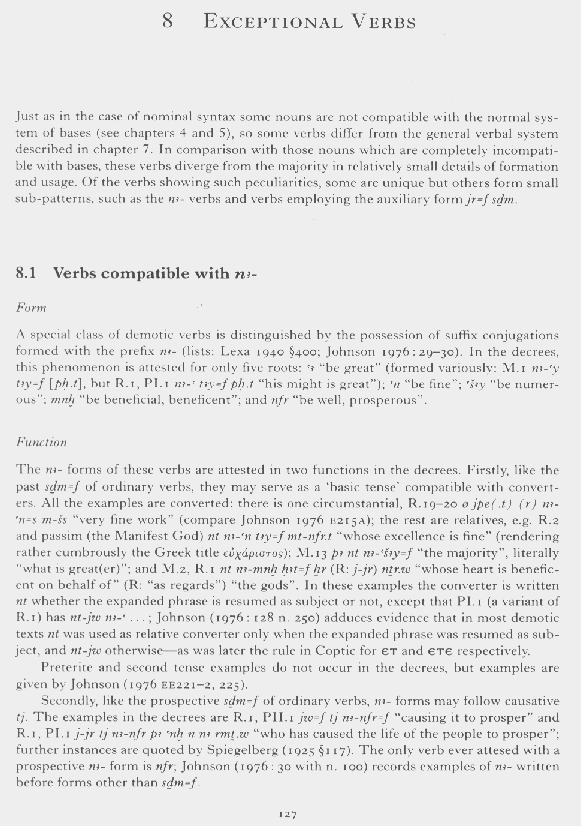
Page 127.
The study, which presupposes no specialist knowledge of demotic, has two principal aims. The first is to assess how the evidence from these texts may advance understanding of important demotic constructions, such as the articles, durative objects, and 'emphatic' patterns. The second aim is to identify and explain the linguistic peculiarities of this specialised corpus. The discussion compares problematic passages with the parallel Greek and hieroglyphic versions and systematically considers theoretical issues underlying the analysis and arrangement of the material, including the distinction between lexical and grammatical elements (such as articles, verbal auxiliaries, and 'converters') on which the syntax of demotic is mainly based.
The books identifies a numberof unique or rare features in the grammar of the decrees, such as the demonstrative form jpn; ps sp ... meaning 'the rest of ...', n-dr before the verbal forms meaning 'whereas', and relative satellites of 'cleft sentences'. New light is shed on commoner constructions, notably the 'zero article', the 'irrealis', 'second tenses' with conditional sense, and extraposition.
The book concludes with transcriptions and translations of the ancient texts of facing pages, as well as full indexes.

Page 127.